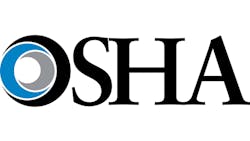NSC 2016: OSHA Brings Health and Safety into the 21st Century
Dr. David Michaels, assistant secretary of labor for OSHA, presented the agency’s Recommended Practices for Safety and Health Programs to National Safety Congress attendees.
“We really need to take occupational health and safety into the 21st century,” he said.
The Recommended Practices for Safety and Health Programs document has not been updated since 1989. Many changes have spurred the need for a revision. The forward lists some of these changes:
- The nature of work is evolving as the economy continues to shift from a manufacturing to a service base, and from a fixed to an often mobile workforce.
- Automation of work activities means that technology, computers, and robotics are being integrated into our workplaces, often introducing new and different hazards.
- Greater diversity in the workplace means that people from different backgrounds and cultures are working alongside each other, often speaking different languages.
- An aging workforce and the rise of sedentary work and lifestyle means that some workers are at higher risk for work-related musculoskeletal disorders.
- There is greater recognition that workers in industries that some think of as safe (such as healthcare, lodging, retail, and transportation) face significant hazards.
- Increased temporary and contract employment, and the rise of the “gig economy” mean that traditional relationships between workers and employers are shifting.
The new guidelines cover general industry. A separate set of recommendations will be released by year-end 2016 to address the unique challenges of the construction industry.
Michaels went on to state the benefits of a dedicated safety and health program.
“Injuries cost employers tremendous amounts of money,” he said. “Safety and health programs do not only reduce injury rates, they save employers money.”
The agency’s Recommended Practices for Safety and Health Programs are meant to be used as a guideline and no penalties will be assessed for employers who do not follow the recommendations, Michaels added.
“I hope that when inspectors go to workplaces they tell employers about these recommended practices,” he said. “Employers who should a good-faith effort could receive a reduction in penalties, but they will not be cited for not having [the document].”
Shortly after the announcement, the National Safety Council released its own statement.
“Workplaces have changed dramatically since the recommended practices were last updated 25 years ago; so employers need real-world information and tools to adjust accordingly,” the National Safety Council announced. “That begins with understanding that we cannot keep workers safe and healthy just by minimizing hazards and risks. Employers must engage their workers and create a positive safety culture to set the organization on a journey to safety excellence.”
The session concluded with a reflection on Michaels and his tenure with OSHA. Come January, he will be entering the world of academia as a teacher, he said. Michaels commended the audience and safety professionals across the United States for their commitment to health and safety in the workplace.
“People in this community have a remarkable passion,” he said, “and if they didn’t, people wouldn’t go home safely to their families."
